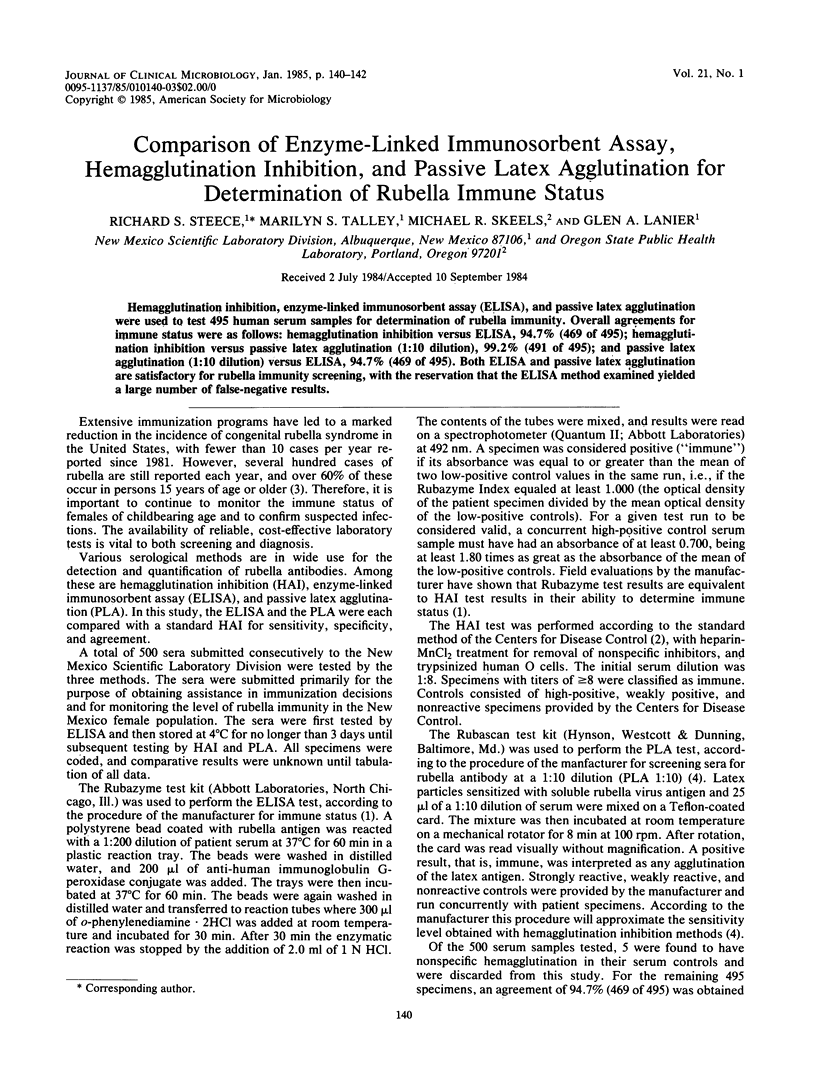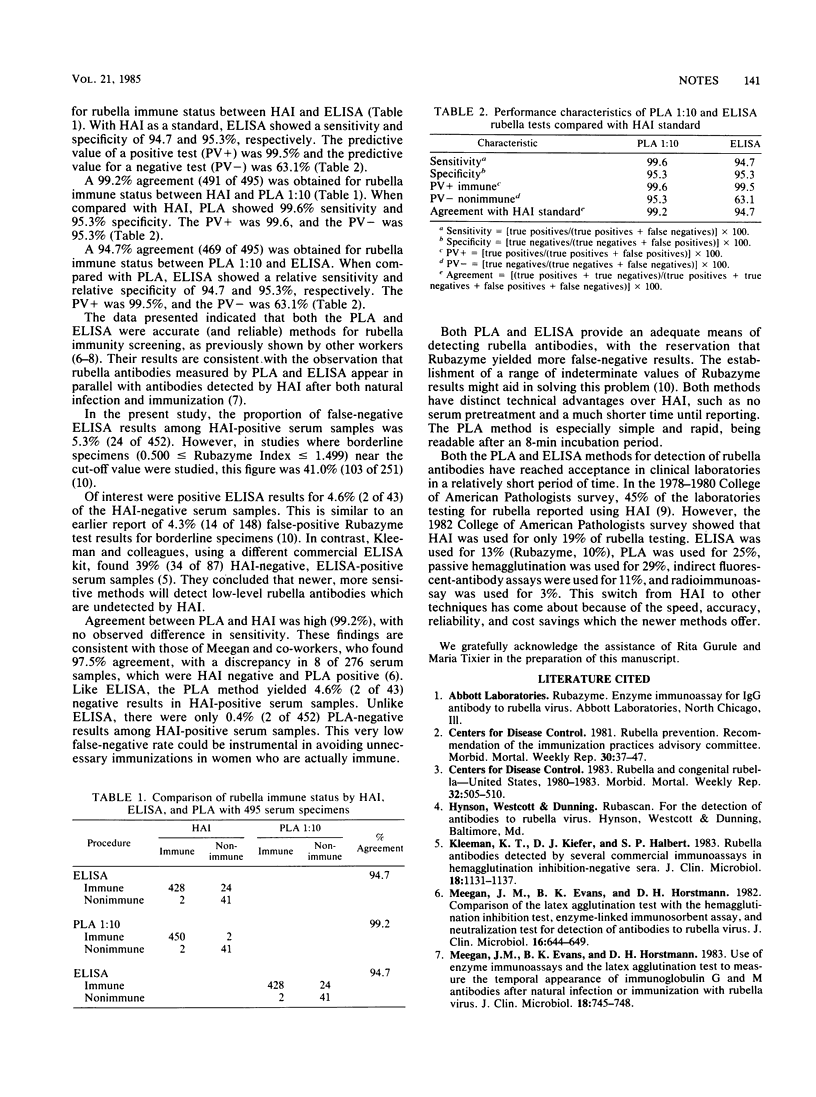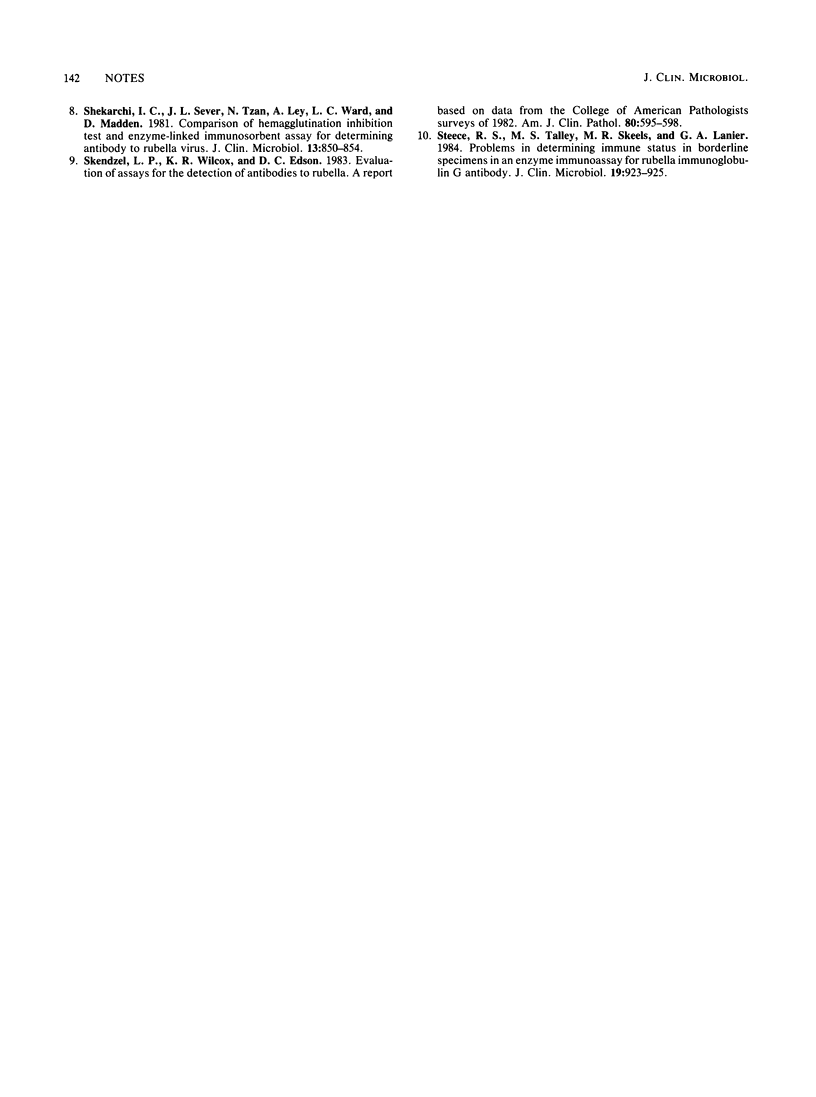Abstract
Hemagglutination inhibition, enzyme-linked immunosorbent assay (ELISA), and passive latex agglutination were used to test 495 human serum samples for determination of rubella immunity. Overall agreements for immune status were as follows: hemagglutination inhibition versus ELISA, 94.7% (469 of 495); hemagglutination inhibition versus passive latex agglutination (1:10 dilution), 99.2% (491 of 495); and passive latex agglutination (1:10 dilution) versus ELISA, 94.7% (469 of 495). Both ELISA and passive latex agglutination are satisfactory for rubella immunity screening, with the reservation that the ELISA method examined yielded a large number of false-negative results.
Full text
PDF


Selected References
These references are in PubMed. This may not be the complete list of references from this article.
- Kleeman K. T., Kiefer D. J., Halbert S. P. Rubella antibodies detected by several commercial immunoassays in hemagglutination inhibition-negative sera. J Clin Microbiol. 1983 Nov;18(5):1131–1137. doi: 10.1128/jcm.18.5.1131-1137.1983. [DOI] [PMC free article] [PubMed] [Google Scholar]
- Meegan J. M., Evans B. K., Horstmann D. M. Comparison of the latex agglutination test with the hemagglutination inhibition test, enzyme-linked immunosorbent assay, and neutralization test for detection of antibodies to rubella virus. J Clin Microbiol. 1982 Oct;16(4):644–649. doi: 10.1128/jcm.16.4.644-649.1982. [DOI] [PMC free article] [PubMed] [Google Scholar]
- Meegan J. M., Evans B. K., Horstmann D. M. Use of enzyme immunoassays and the latex agglutination test to measure the temporal appearance of immunoglobulin G and M antibodies after natural infection or immunization with rubella virus. J Clin Microbiol. 1983 Sep;18(3):745–748. doi: 10.1128/jcm.18.3.745-748.1983. [DOI] [PMC free article] [PubMed] [Google Scholar]
- Shekarchi I. C., Sever J. L., Tzan N., Ley A., Ward L. C., Madden D. Comparison of hemagglutination inhibition test and enzyme-linked immunosorbent assay for determining antibody to rubella virus. J Clin Microbiol. 1981 May;13(5):850–854. doi: 10.1128/jcm.13.5.850-854.1981. [DOI] [PMC free article] [PubMed] [Google Scholar]
- Skendzel L. P., Wilcox K. R., Edson D. C. Evaluation of assays for the detection of antibodies to rubella. A report based on data from the College of American Pathologists Surveys of 1982. Am J Clin Pathol. 1983 Oct;80(4 Suppl):594–598. [PubMed] [Google Scholar]
- Steece R. S., Talley M. S., Skeels M. R., Lanier G. A. Problems in determining immune status in borderline specimens in an enzyme immunoassay for rubella immunoglobulin G antibody. J Clin Microbiol. 1984 Jun;19(6):923–925. doi: 10.1128/jcm.19.6.923-925.1984. [DOI] [PMC free article] [PubMed] [Google Scholar]


